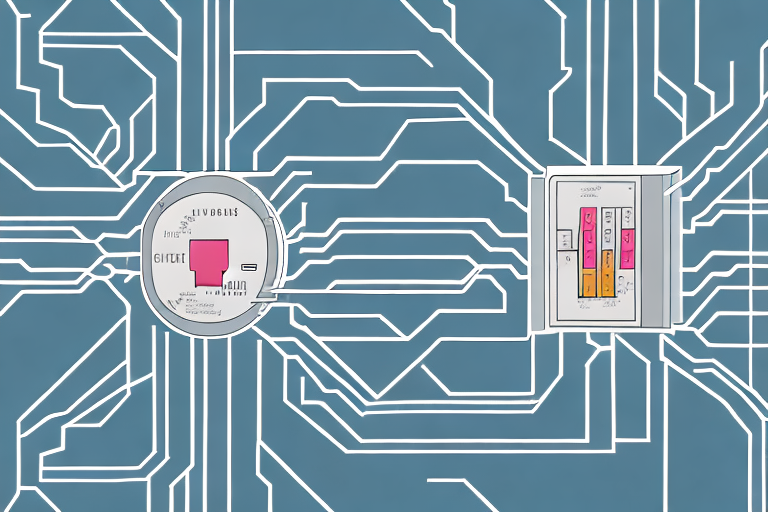Circuit breakers are essential components that play a crucial role in ensuring the safety and functionality of electrical systems. Understanding how they work and their various applications is crucial for both homeowners and industry professionals. In this comprehensive guide, we will break down the barriers surrounding circuit breakers and explore their applications in detail.
Understanding Circuit Breakers
Before delving into the intricate details of circuit breaker, it’s essential to grasp their basic function. At their core, circuit breakers act as switches that automatically interrupt electrical currents in the event of an overload or short circuit. By doing so, they prevent overheating and potential damage to electrical systems.
There are various types of circuit breakers available, each designed to serve specific purposes. Let’s take a closer look at the different categories and their distinctive features.
The Basic Function of Circuit Breakers
Circuit breakers are designed to protect electrical circuits from excessive current flow, which can pose a serious risk of fire or other electrical hazards. When the current passing through a circuit exceeds the breaker’s defined limit, it trips and interrupts the flow of electricity. This action instantly prevents further current flow, safeguarding the system.
However, the process of tripping a circuit breaker is not as simple as it may seem. Inside the breaker, there is a small but powerful electromagnet that plays a crucial role. When the current exceeds the breaker’s limit, the electromagnet becomes energized, exerting a force on a metal lever. This lever then moves to open the contacts, effectively breaking the circuit. This entire process happens in a fraction of a second, ensuring swift protection against potential electrical hazards.
Types of Circuit Breakers
There are several types of circuit breakers, each suited for varying applications. Some of the most common types include:
- Miniature Circuit Breakers (MCBs):
- Molded Case Circuit Breakers (MCCBs):
- Ground Fault Circuit Interrupters (GFCIs):
- Arc Fault Circuit Interrupters (AFCIs):
- Residual Current Circuit Breakers (RCCBs):
Key Components of Circuit Breakers
A typical circuit breaker consists of several essential components, each playing a vital role in its functioning. Some key components include:
- Contacts:
- Operating Mechanism:
- Tripping Mechanism:
- Current Rating:
The Role of Circuit Breakers in Electrical Safety
Ensuring electrical safety is of paramount importance in both residential and commercial settings. Circuit breakers play a pivotal role in achieving this by protecting against common electrical hazards. Let’s explore some key aspects of electrical safety that circuit breakers address.

Preventing Electrical Overloads
Electrical overloads occur when the current flowing through a circuit exceeds its rated capacity. This can lead to overheating, which may result in electrical fires. Circuit breakers are designed to detect and interrupt overcurrent situations, preventing electrical overloads and reducing the risk of fires of garden waring.
Mitigating Short Circuit Dangers
Short circuits occur when there is a direct connection between the live and neutral wires, bypassing the load. This can lead to a sudden surge of excessive current flow and is a common cause of electrical fires. Circuit breakers effectively mitigate short circuit dangers by swiftly interrupting the flow of current, preventing damage to the circuit and reducing the risk of fire.
Ground Fault Protection
Ground faults occur when the current flows from a live wire to an unintended path, such as the ground or a person. This can result in electric shock hazards. GFCIs are specialized circuit breakers that quickly detect ground faults and interrupt the circuit, preventing potential electrocution.
In addition to these critical safety functions, circuit breakers also provide other important benefits. One such benefit is the ability to easily reset the circuit after it has been tripped. When a circuit breaker detects an electrical fault and interrupts the flow of current, it can be manually reset once the issue has been resolved. This eliminates the need to replace fuses, which can be time-consuming and costly.
Another advantage of circuit breakers is their ability to provide selective coordination. Selective coordination refers to the ability of circuit breakers to isolate faults in a specific area while allowing uninterrupted power supply to other parts of the electrical system. This ensures that only the affected circuit is interrupted, minimizing disruptions and improving overall system reliability.
Furthermore, modern circuit breakers often come equipped with advanced features such as arc fault detection. Arc faults occur when an electrical current jumps across a gap, creating a discharge of heat and light. These faults can be caused by damaged or deteriorated wires, loose connections, or faulty appliances. Circuit breakers with arc fault detection capabilities can quickly identify and respond to these dangerous situations, reducing the risk of electrical fires.
In conclusion, circuit breakers are essential components of electrical safety systems. They play a crucial role in preventing electrical overloads, mitigating short circuit dangers, and providing ground fault protection. Additionally, circuit breakers offer advantages such as easy reset, selective coordination, and advanced features like arc fault detection. By understanding the importance and functionality of circuit breakers, we can ensure a safer electrical environment for both residential and commercial applications.
Circuit Breakers vs. Fuses: A Comparative Analysis
While circuit breakers are widely used in modern electrical systems, fuses were more prevalent in the past. Understanding the advantages and disadvantages of both helps in making informed decisions regarding electrical installations.
The Pros and Cons of Circuit Breakers
Circuit breakers offer several advantages over fuses:
- Easy Reset:
- Flexibility:
- Enhanced Safety:
However, circuit breakers also have some disadvantages:
- Initial Cost:
- Complexity:
The Advantages and Disadvantages of Fuses
Despite being less commonly used today, fuses still have their merits:
- Simple Design:
- Cost-Effective:
However, fuses also have certain drawbacks:
- Replacement Requirement:
- Limited Protection:
The Applications of Circuit Breakers
Circuit breakers find a wide range of applications in residential, commercial, and industrial settings. Let’s explore some common scenarios where circuit breakers play a pivotal role.
Residential Use of Circuit Breakers
In residential settings, circuit breakers are essential for safeguarding electrical systems from overloads and short circuits. They are typically panel-mounted and protect specific circuits or groups of outlets within the home. In the event of a fault, the circuit breaker interrupts the flow of electricity, preventing damage to appliances and electrical wiring. By clicking here you can also read about Study on electrical energy and prospective electricity generation from renewable sources in Australia.
Industrial Applications of Circuit Breakers
In industrial settings, circuit breakers are critical for protecting large-scale electrical systems. They are used to safeguard machinery, motors, and other equipment from electrical faults. Industrial-grade circuit breakers are designed to handle higher currents and provide reliable protection against overloads and short circuits.
Circuit Breakers in Power Generation
Circuit breakers are integral components in power generation facilities, where they protect generators, transformers, and transmission lines. These circuit breakers have high current ratings and are designed to handle the immense electrical loads associated with power generation and distribution.
Understanding the numerous applications of circuit breakers highlights their indispensable nature in various sectors of society. Whether it’s residential homes, commercial buildings, or power generation plants, circuit breakers provide vital protection and ensure the safety and reliability of electrical systems.
In Conclusion
In this ultimate guide to circuit breakers and their applications, we have explored the fundamental principles of circuit breakers, their different types, and key components. We have also examined their crucial role in electrical safety, their advantages and disadvantages compared to fuses, and their applications in various settings.
By familiarizing ourselves with circuit breakers, we can make informed decisions about their installation, maintenance, and usage. Continual learning about electrical systems and their protective devices is essential for promoting safety, efficiency, and reliability in our ever-advancing technological world.

